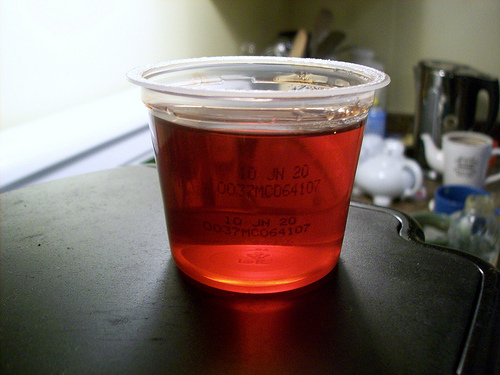Decoding confusing Weight Watchers terms
As you feel your way around the Weight Watchers system, you start to encounter these odd terms that all seem like they mean about the same thing, but with radically different results. There is a lot of overlap between the lists of Power Foods, zero point foods and the Simply Filling technique. But what do they all mean?
Points Plus
The word "points" gets thrown around a lot in the Weight Watchers system. It's understandably confusing to the beginner. The term "Points Plus" refers to what you probably think of as "regular Weight Watchers."
Points Plus is the default tracking system, where you get a daily and a weekly allotment of points, and you catalog everything you eat against that tally. For most of us, for the most part, Points Plus IS the Weight Watchers system.

Image courtesy Flickr/ohdearbarb
Zero Points Foods
These are the secret weapon used by many Weight Watchers subscribers. If something has no points, you can eat as much of it as you like. This is a great way to stay full and snack without having to constantly record every single thing you eat.
There is something of a cottage industry online of collecting zero points recipes, particularly zero points desserts (like sugar-free Jell-O topped with sugar-free fat-free Cool Whip).
The "zero points" concept was a much bigger deal before Weight Watchers rolled out the Simply Filling technique (which we will examine in detail later). But I personally like having a big bowl of fresh fruit like apples, bananas and oranges on the counter and knowing that I can grab one whenever I'm feeling puckish or snacky.
Examples of zero points foods:
- Fruit
- Vegetables (not avocado)
- Diet soda
- Sugar-free Jell-O
- Many sauces, including horseradish, hot sauce, steak sauce and ketchup.
- Salsa
- Kimchee
- Sugar-free fat-free Cool Whip

Image courtesy Flickr/Bahai Views / Fitzy Phoebie
Power Foods
Power Foods are indicated by a green triangle. Not to put too fine a point on it, but these are basically Weight Watchers nagging you to eat better. Weight Watchers has decided that Power Foods are the best things to include in your diet, which is why they earn the green triangle.
Power Foods are good for you, and provide a lot of "filling feeling" for the points, but they don't affect your bottom line. It would be great if you ate nothing but Power Foods all day, but they still count points the same way as any other food.
Power Foods are the legacy of the old "Filling Foods" list. They are determined by energy density combined with nutritional value. Basically, a more hard-core version of Filling Foods.
If you are using the standard tracking technique, then Power Foods won't really matter too much for you. Power Foods really come into play with the Simply Filling technique, which we will explore next.
- Whole grain bread
- Fat-free sugar-free yogurt
- Fruit
- Vegetables (not avocado)
- Whole grains like oatmeal, brown rice and quinoa
- Eggs
- Lean meats

Image courtesy Flickr/janineomg
Simply Filling
Simply Filling is an alternate technique if you get tired of tracking every single food you eat. Basically, Simply Filling lets you eat as much as you want of zero points and Power Foods, and only track the extra stuff that has points attached.
By default, your technique is "tracking." You can change this to "Simply Filling" from your Plan Manager. When you do this, you lose your Daily Points allotment. You still get a Weekly Points allotment, but it's smaller than it is if you use tracking.
Simply Filling is basically Weight Watchers reluctantly acknowledging that tracking all those points can get very tedious. And it doesn't work very well in situations like holidays, vacations, or if you are facing a long stretch without Internet access.
On the down side, Simply Filling requires you to memorize a long list of foods (or print out the PDF file and keep it in your pocket). But there are a lot of times when that would be easier than trying to track everything.
The Simply Filling technique runs on a weekly basis, with a week's worth of points being allotted at a time. But you can switch back and forth between techniques as often as you like on the website without encountering any problems (that I have noticed).
Main image courtesy Flickr/paulswansen
